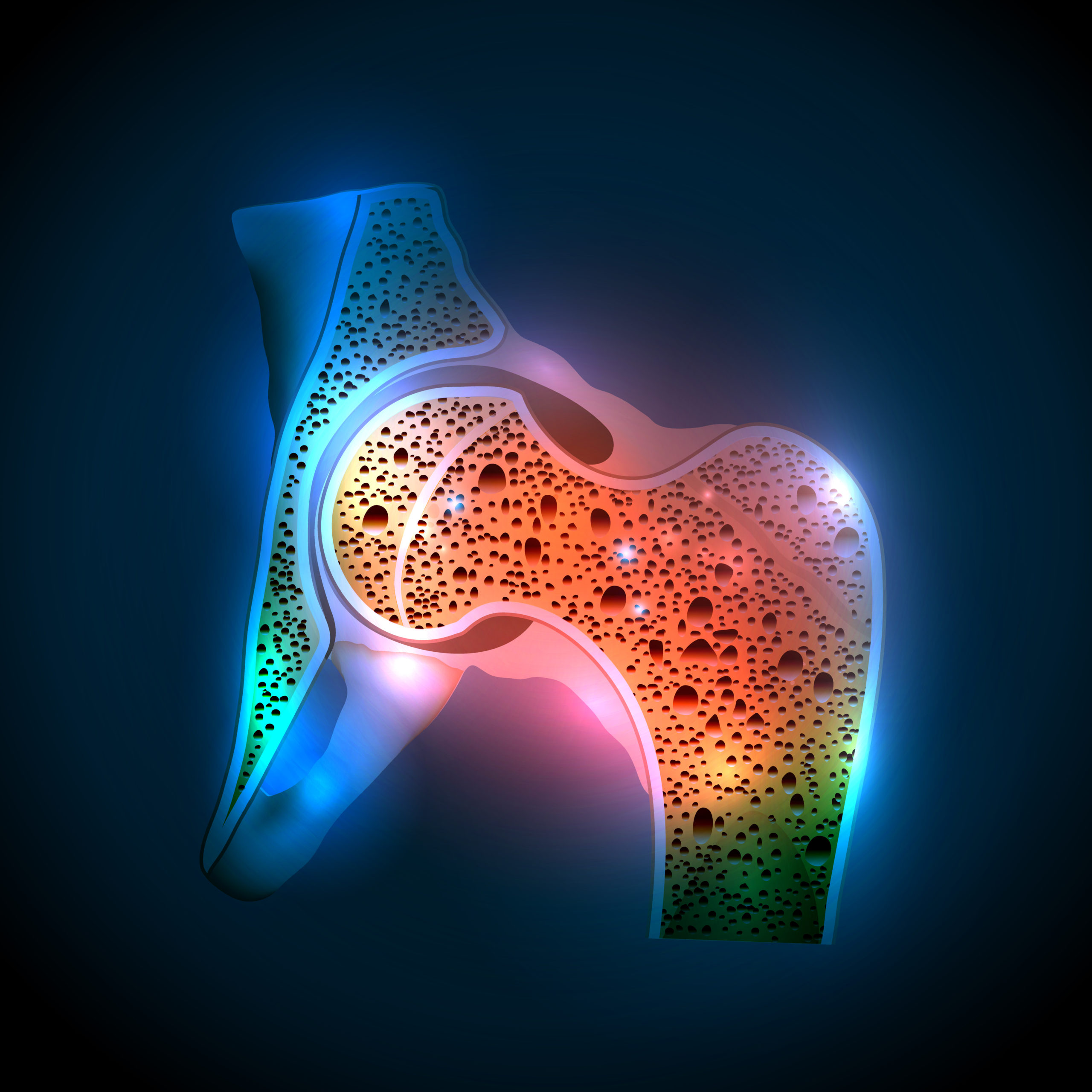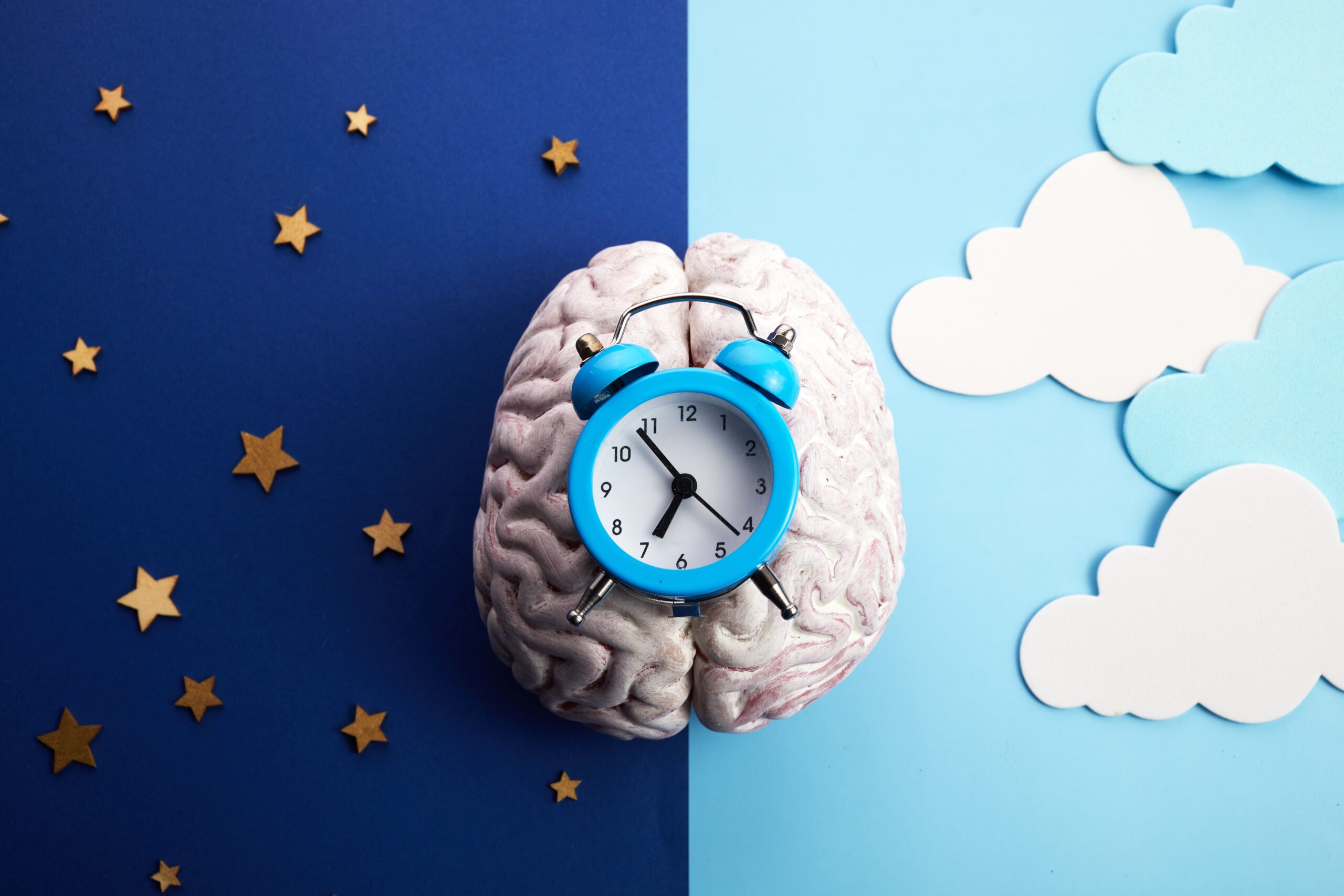by Hannah Hollingsworth
Mothers often tell their children to eat calcium-filled foods for their bones to grow strong. But that’s advice adults can take into consideration too.
Osteoporosis is a condition that causes the weakening of the bones, making them more prone to breakage and fractures. It’s known as a silent disease because it doesn’t usually present symptoms until the person suffers from a bone fracture or has their bone tissue scanned and examined.
Bone tissue is divided into two parts: the hard outer layer (cortical bone) and a sponge or honeycomb-like inner part of the bone (trabecular bone). The word osteoporosis literally means porous bone. Osteoporosis happens when the naturally occurring holes in the inner, sponge-like part of the bone become larger. This makes the bone tissue less dense and more prone to breakage.
Osteoporosis is relatively common in the U.S. 54 million people suffer from it, and more are at risk. Several factors put people at risk of developing osteoporosis. The condition is manageable, and you can take steps to reduce your risk of developing this disease.
Risks
Most of the risks of osteoporosis come down to your gender, lifestyle and genetic history. Several medications can put you at risk for osteoporosis.
- Age. People aged 50 and over are the most likely to develop this bone-weakening disease. Bone tissue regenerates itself regularly until age 30. After the age of 35, bone tissue doesn’t build up as fast as it used to. This can cause bones to weaken unless they receive proper nutrients and care gradually.
- Gender. Women are four times more likely to develop osteoporosis than men. Menopause is a significant factor. When women go through menopause, they lose bone mass quickly because they don’t produce as much estrogen as before.
- Genetics. Genetics holds a huge influence over many physical and mental characteristics. Your risk of osteoporosis might be higher if a parent or grandparent suffered from the condition. People with a petite or slender build are also more at risk because they have less bone mass in general.
- Ethnicity. People who are of Caucasian or Asian ethnicity, especially women, are more likely to get osteoporosis.
- Lifestyle and nutrition. Genetics alone doesn’t determine whether or not you’ll suffer from this disease. People who have healthy diets and active lifestyles have better odds of having a regular bone density as they age. People who are inactive, smoke and drink more than two alcoholic drinks per week put themselves at risk for osteoporosis.
Medications
Certain medications can put you at risk of losing bone density.
The most common are:
- Chemotherapeutic drugs
- Certain steroids
- Selective serotonin reuptake inhibitors (SSRIs)
- Proton pump inhibitors (PPIs)
- Certain anti-seizure medications
- Some premenopausal medicines
- Lithium
- Excessive thyroid hormones
Disease
Some health conditions might also present a higher risk factor for osteoporosis:
- Hormonal disorders
- Blood disorders
- Nervous system disorders
- Digestive disorders
- Cancer
- Certain medical procedures
- Hormonal disorders
- HIV/AIDS
- Organ malfunction and transplants
- Mental illness
Prevention
Osteoporosis is manageable and can be prevented through lifestyle changes. Proper nutrition through food and supplements is important to keep your body and immune system functioning.
Calcium and vitamin D are two nutrients that are vital to maintaining strong bones. Adults should consume 1,000-1,200mg of calcium and 400-1,000 IU of vitamin D per day. Ask your doctor how much of these nutrients you should have each day for your body.
Regular exercise can reduce the rate of normal bone loss with age. Cardio, resistance training and balance-focused exercises are recommended. Quitting smoking and limiting alcohol intake are also key to a healthy lifestyle and preventing osteoporosis.
Osteoporosis is sometimes called a silent disease. But there are tests available to check your bone density.
The DEXA scan (Dual-Energy X-ray Absorptiometry) is an imaging test where a medical professional can examine the inner, sponge-like part of your bone to determine its health. Consult your doctor about a DEXA scan if you suspect osteoporosis.
Management
Osteoporosis can be managed through medication, diet and preventative steps to avoid slips and falls.
A percentage of cases can be managed with proper nutrition, supplements and exercise that focuses on building strength and balance. Removing hazards in and around the home that cause you to slip and fall is also important.
Prevent falls by:
- Wearing sturdy, non-slip shoes both inside and outside the house
- Install assistive bars on any areas you might struggle to maintain balance, like the shower or stairway
- Clean up spills immediately and keep floors clean and free of debris
- Hide loose wires and remove any rugs that tend to move around
- Make sure living areas and halls are well-lit, so any potential spills or hazards can be spotted easily
- Ask a neighbor, friend or family member to help with carrying heavy items
Some people who have low bone density may be advised by their doctor to start a treatment plan. There are different types of medication for people with different needs.
Types of osteoporosis medication are:
- Hormonal
- Anabolic agents, which can help build bone tissue
- Bisphosphonates, which prevent your body from reabsorbing bone tissue
It may take some time and consultation with your doctor to determine which medicine is right for you.








Leave A Comment